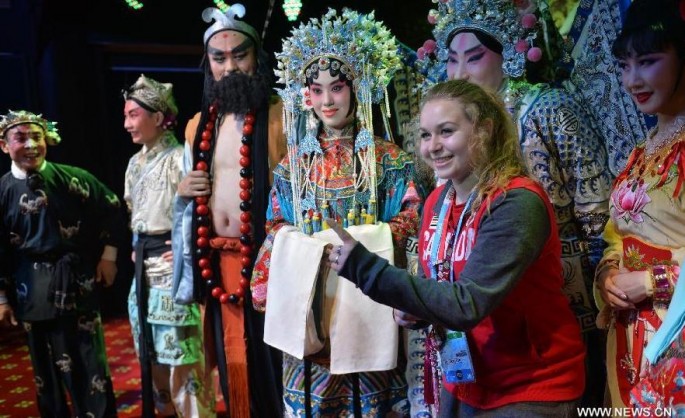A 700-year-old outdoor Chinese opera stage in north China's Shanxi Province has been fully returned to its original condition following a successful six-month restoration project, according to local cultural relics authorities.
The Dongyuemiao Opera Stage in Yaodu District of Linfen City, which was built during the early part of the Yuan Dynasty (1271-1368), had to undergo major repair work on its performance hall, the bell and drum tower, the side rooms, and the walls and floor after they were found with severe water and structural damages.
The restoration project which began in June was completed after six months at a cost of about 1.52 million yuan ($247,970) according to Xue Qinghong, an official with the Yaodu Cultural Relics and Tourism Bureau.
Shanxi boasts of nearly 3,000 opera stages, but the Dongyuemiao Opera Stage in Yaodu District is reportedly one of only eight opera stages of its time that can still be seen today.
Since the time of the Tang Dynasty (618-917), Chinese opera remains as one of the most popular forms of entertainment in the country. Even today, it continues to be enjoyed by both leaders and commoners alike.
Historically, it was Emperor Xuanzong during the Tang Dynasty who can be credited with the creation of the first national opera troupe called the "Pear Garden" around 712-755. In fact, to this day, Chinese opera performers are still referred to as "Disciples of the Pear Garden." Chinese opera as performed today also continue to make use of the traditional characters of Sheng (the man), Dan (the woman), Hua (the painted face) and Chou (the clown).
During the Yuan Dynasty, the opera performers began using the vernacular language of the common people, rather than Classical Chinese, to better reach a wider audience.
Then during the beginning of the Ming Dynasty (1368-1644), the traditional singing and drama style from Shanxi in the north was combined with melodies from "Kungu," a southern form of Chinese opera.
China's rich operatic heritage was almost lost during China's Cultural Revolution (1966-1976). Fortunately, beginning 1976, attempts were made to revive Chinese opera in its various forms.
Today, more than 30 forms of Chinese opera survive and continue to be seen being performed regularly throughout the country.



























